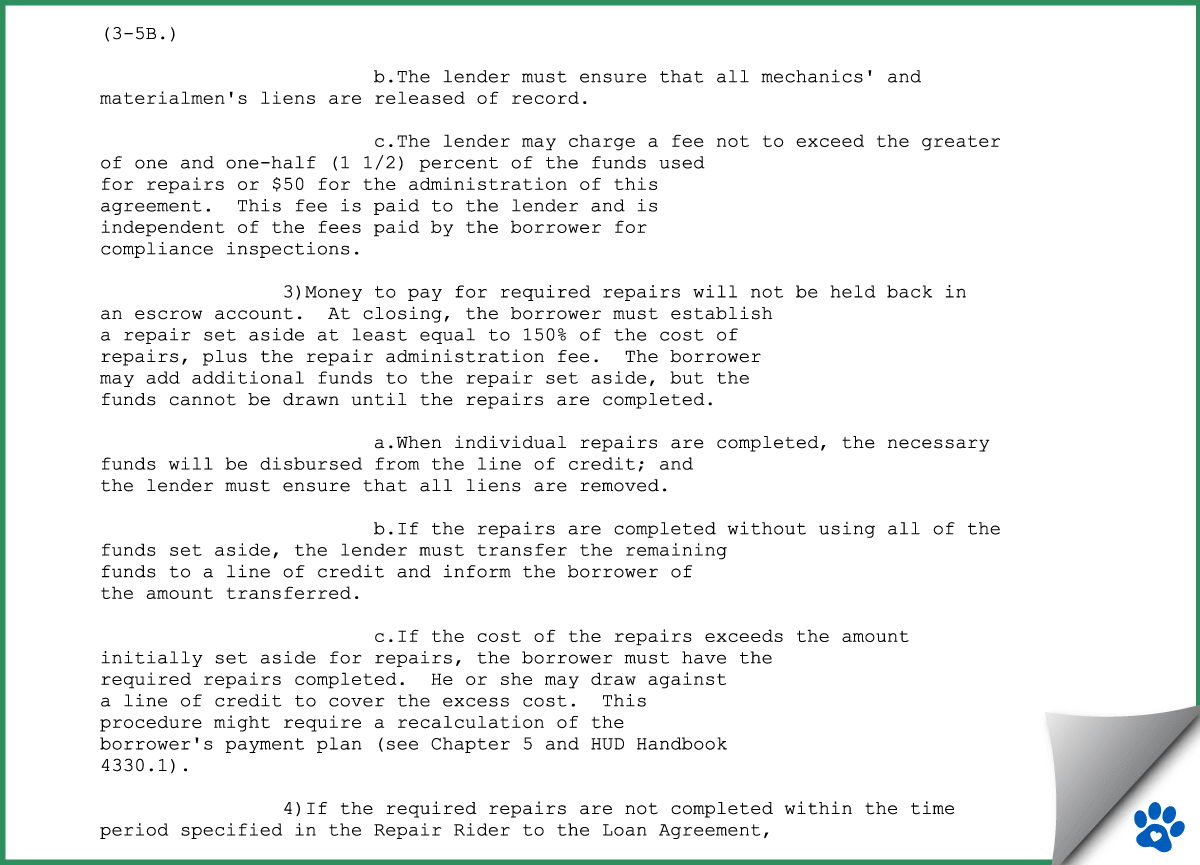
America’s #1 Rated Reverse Lender

 |
ARLO™REVERSE MORTGAGE
ASSISTANT |
How to Use a Reverse Mortgage Repair Set-Aside
 |
Michael G. Branson, CEO of All Reverse Mortgage, Inc., and moderator of ARLO™, has 45 years of experience in the mortgage banking industry. He has devoted the past 20 years to reverse mortgages exclusively. (License: NMLS# 14040) |
 |
All Reverse Mortgage's editing process includes rigorous fact-checking led by industry experts to ensure all content is accurate and current. This article has been reviewed, edited, and fact-checked by Cliff Auerswald, President and co-creator of ARLO™. (License: NMLS# 14041) |
Hello ARLO,
My mom’s house is in Martinsville, IN. During a healthy economy, the house was worth around $200,000. It requires some repair.
- Who pays for the appraisal to determine the home value?
- And, are there arrangements where if repairs are required as a condition of the loan approval, can proceeds from the loan be placed towards the repair?
In other words, we don’t have the funds readily available to make the repair.
Are there steps in the process that will tell us if we really should not go forward with a reverse mortgage (meaning, the disadvantages outweigh the advantages)?

Good questions! You would pay for the appraisal, so a little investigation first does not hurt. If you live in an area with recent sales of houses like yours, see what they are selling for.
Sometimes local real estate professionals can help, but you want to look only at closed sales of similar properties. If they sell for around $150,000, that will give you an idea of your value.
HUD guidelines will allow for repair set-asides under certain circumstances.
In other words, some things will be called out in the appraisal as needing attention, but they will not be required to be done at all, and the value will be adjusted accordingly. Some things are necessary for the lender to be repaired, but then they will allow you to set aside 1.5 times the repair cost to be released when the work is completed.
Some items are considered health and safety hazards or important enough to the value that must be completed before closing the escrow. Many companies familiar with reverse mortgages will do the work before the close of escrow, knowing they will not be paid until after the loan closes.
They wait until after the appraisal is done and the borrower has a firm loan approval, then they do any required work, and this allows borrowers who do not have the funds for the repairs to close their loans as well.
The tough time is when comparable sales aren’t available, and then sometimes, the only way to know for sure is to order the appraisal. You need to decide if the loan is right for you and then check the values. From there, if we all do an excellent research job, the appraisal’s hurdle is not as significant.
Before you do that, though, you should have a good idea of the worst-case scenario and the best case and then decide whether to pay for an appraisal or not an informed one.
HUD Repair Set-Aside Guidance

The lender may charge a fee not to exceed the greater of one and one-half (1 1/2) percent of the funds used for repairs or $50 for the administration of this agreement. This fee is paid to the lender and is independent of the fees paid by the borrower for compliance inspections. The lender must ensure that all mechanics’ and materialmen’s liens are released of record.
Money to pay for required repairs will not be held back in an escrow account. At closing, the borrower must establish a repair set aside at least 150% of the cost of repairs, plus the repair administration fee. The borrower may add additional funds to the repair set aside, but the funds cannot be drawn until the repairs are completed.
When individual repairs are completed, the necessary funds will be disbursed from the line of credit; and the lender must ensure that all liens are removed. If the repairs are completed without using all the funds set aside, the lender must transfer the remaining funds to a line of credit and inform the borrower of the amount transferred.
If the cost of the repairs exceeds the amount initially set aside for repairs, the borrower must complete the required repairs. They may draw against a line of credit to cover the excess cost. This procedure might require recalculating the borrower’s payment plan (see Chapter 5 and HUD Handbook 4330.1).
Suppose the required repairs are not completed within the time specified in the Repair Rider to the Loan Agreement. In that case, the lender must discontinue payments on the loan, freezing the loan at a line of credit status, available only to fund repairs and mandatory items such as property charges and MIP.
Source: https://www.hud.gov/hudclips/letters/mortgagee
ARLO recommends these helpful resources:

 Michael G. Branson
Michael G. Branson Cliff Auerswald
Cliff Auerswald

April 4th, 2023
April 4th, 2023
October 3rd, 2022
October 6th, 2022
September 27th, 2022
September 27th, 2022
April 12th, 2022
April 12th, 2022
March 22nd, 2022
March 22nd, 2022